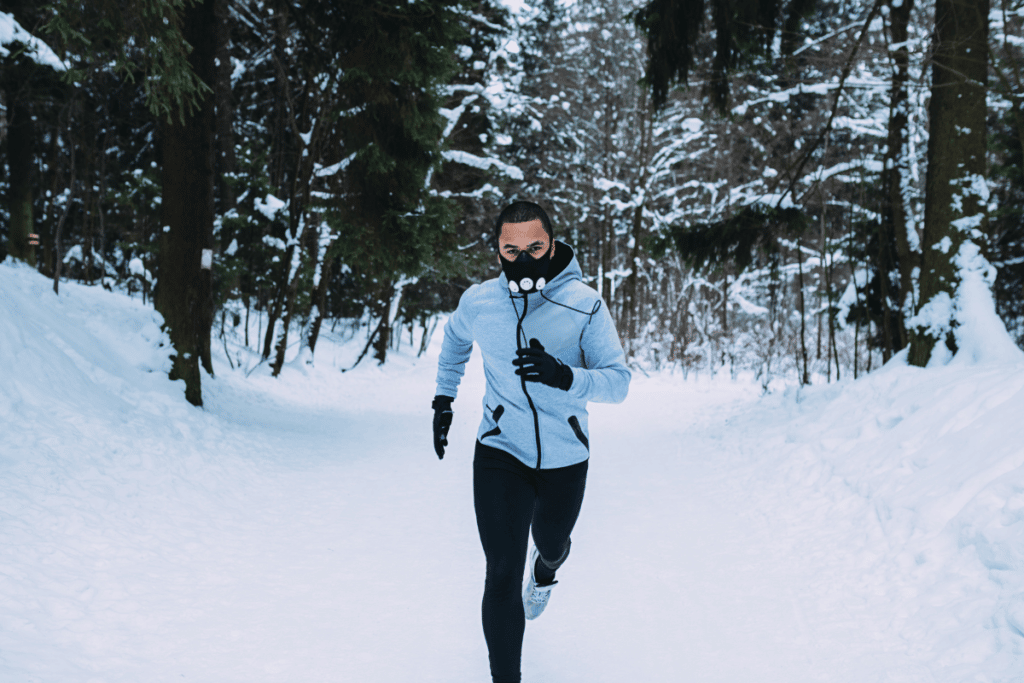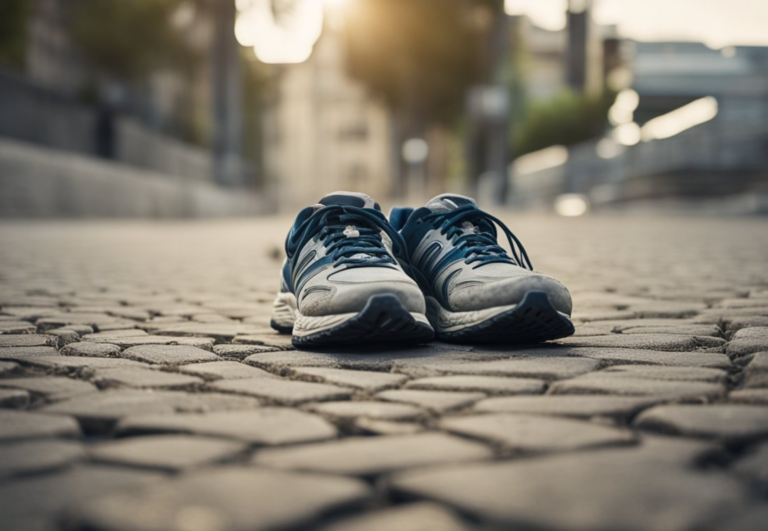Can You Run with No Shirt? (10 Reasons To Lose It or Keep It)
Most people in developed societies keep their shirts on in public, but many runners buck this trend in favor of topless trots. If you’re wondering if this method is something you should try, read the article below to find an answer to the question, “Can you run with no shirt?”
In most cases, it’s ok to run without a shirt. Some even find it preferable for its improved comfort, freedom, and breathability. However, in some instances running shirtless may promote negative consequences such as sunburn, social blowback, or even legal problems. Make sure you’re informed of the pros and cons before running shirtless.
Keep reading to learn a few more details about running with or without a shirt.
Should I run with or without a shirt?
Choosing to run without a shirt is really up to your preferences in most cases.
Some runners, especially in warm climates with hot and humid temperatures, find running without a shirt more agreeable than wearing some kind of running-specific t-shirt or tank top. One perk to running without a shirt that most liberated runners talk about is the decrease in chafing.
Wearing rougher materials during a repetitive exercise like running can lead to chafing. This is especially true in the underarms and chest areas.
However, many others choose to run with a shirt on, no matter the weather – even running shirtless in the rain or running shirtless in cold weather. Depending on whether you live, this may be socially inappropriate or just plain illegal (especially for women). It also increases your sun exposure, leading to health risks – or at least lots of extra time spent applying sunscreen! Finally, some people simply find running topless to be uncomfortable for one reason or another.
As long as you’re taking the proper measures in regard to both legal and health concerns, run free if you want to!
Reasons to run without a shirt
There might be a number of reasons runners choose to run without wearing a shirt.
Here are some potential running shirtless benefits:
- Comfort – Some people may find it more comfortable to run without a shirt, especially in hot or humid weather.
- Airflow – A shirt can trap heat and sweat against the skin, making it difficult to cool down while running. Removing the shirt can help improve breathability and keep the body cooler.
- Personal preference – Some people simply prefer running without a shirt and find it more enjoyable or liberating.
- Sun exposure – Running without a shirt can expose the skin to the sun, which can help the body produce vitamin D. Of course if this is the case for you, remember to wear sunscreen!
- Form – Some runners believe that running without a shirt can help improve their running form and range of motion as it allows them to feel the movement of their body more easily.
It’s important to remember that running without a shirt may not be appropriate in every situation, and you might want to consider factors such as the weather, location, social norms, and personal comfort when deciding whether to run without a shirt.
Reasons why you shouldn’t run without a shirt
Of course, running without a shirt could result in some negative consequences.
Here is a list of potential drawbacks to running shirtless:
- Illegal – Is running shirtless illegal? In some areas, it is illegal to be shirtless in public. Running shirtless could result in a fine or other legal consequences.
- Propriety – In some cultures, it is considered inappropriate to run shirtless in public. This is especially true for women used to running in only a tank top or sports bra. Is running shirtless douchey if you’re a guy? Some people would say yes.
- Sun exposure – Running without a shirt can expose the skin to the sun, increasing the risk of sunburn and, ultimately, skin cancer. To avoid these consequences, you should protect the skin from the sun by wearing sunscreen or protective clothing.
- Comfort – You may find it uncomfortable to run without a shirt, especially if you are self-conscious about your body or if you are not used to running without a shirt.
- Personal preference – You may simply prefer to wear a shirt while running.
Ultimately, the decision to run with or without a shirt is personal and should be based on your comfort and preferences where legal consequences are irrelevant.
It’s important to consider the specific circumstances and any potential risks or consequences before deciding whether to run without a shirt.
Can I run outside shirtless?
Deciding to run shirtless outside depends on a number of factors, including the area’s location, weather, and cultural norms.
Generally, running shirtless can be a comfortable and enjoyable exercise, especially in hot or humid weather. However, it is important to consider the potential risks and consequences of running shirtless.

For example, running without a shirt can expose the skin to the sun, which can increase the risk of sunburn and skin cancer. It’s important to protect the skin from the sun by wearing sunscreen or protective clothing.
In some places, it is legal to be shirtless in public, while in others it is not. It is important to familiarize yourself with the laws and customs of the area in which you are running.
As of 2019, it’s legal for women to run shirtless in Colorado, Kansas, New Mexico, Oklahoma, Utah, and Wyoming. By contrast, it is illegal to show a woman’s breasts in Indiana and Tennessee. The other states fall somewhere in the middle, but there’s no such fuss about the men’s nipples.
Ultimately, the decision to run with or without a shirt is yours to make. Just remember to consider the specific circumstances and any potential risks or consequences before deciding whether to run without a shirt.
Can you run shirtless in a marathon?
It is possible to run a marathon shirtless, but it is typically not recommended for a number of reasons.
Running a marathon is a physically demanding activity requiring much preparation and training. You should always consider the specific challenges and risks involved in running a marathon and make sure you’re prepared for the event with the proper equipment.
One of the main risks of running a marathon shirtless is sun exposure. A marathon is a 26.2-mile race that takes place over the course of a number of hours. This length of time can increase the risk of sunburn. Repeated over a number of years can lead to skin cancer. When running shirtless, try to protect the skin from the sun by wearing sunscreen or other protective accessories such as hats.
In addition to these reasons, certain race officials or event organizers may not allow shirtless running. If they do allow it, you may be required to wear your race number on your shorts or race band for identification and time tracking.
Can you run shirtless in winter?
While it’s possible to run shirtless in the winter, it’s not something you should make a habit of doing.
If you live in a cold climate like the Northern United States or Canada, running shirtless in the winter can be dangerous. Running is a taxing event that often involves long periods of exposure to harsh natural elements. In winter, choosing to run shirtless may result in frostbite or hypothermia, both of which can be fatal.

In addition to these potentially lethal health problems, running shirtless in the winter can be downright painful and will likely cause you to have to stop short of your desired distance goal. When running in wintertime, be smart and wear the appropriate clothing. In general, there are not many perks to deciding to run shirtless in cold weather.
Is it okay to work out without a shirt?
In some contexts, you may work out without a shirt, but your gym likely isn’t one.
Most gyms require members to wear a shirt while working out, especially if they use communal equipment.
Shirts help absorb sweat that would otherwise become absorbed by gym equipment. When a gym operates an environment utilized by hundreds of users, the equipment will wear out at a higher rate.
Allowing clients to work out shirtless can also be bad for business. Most people despise using exercise equipment that is already coated in another person’s sweat. For this reason, most gyms require you to wipe equipment down with sanitary spray and a towel after using it.
However, working out on your own without a shirt is generally more acceptable. This is especially true if you own your own equipment or plan to concentrate on body-weight-only exercises like running, calisthenics, or plyometrics.






